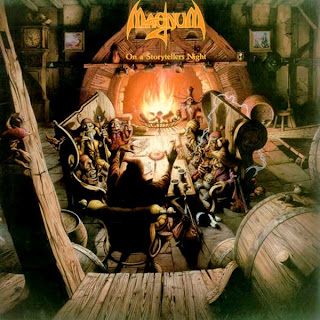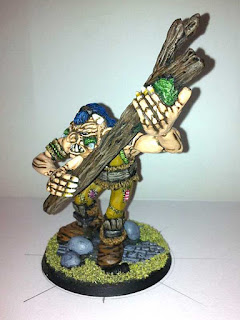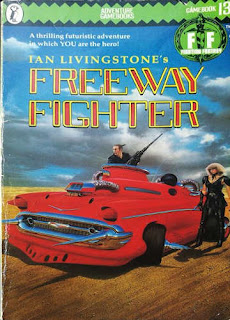 |
| Worshipful Company of Feltmakers of London |
My first challenge (and one all GMs encounter) was to bring as diverse a party from the four corners of the globe together in as believeable a fashion as I could. I decided to use the scenario Challenge of Champions by Jonathon M Richards (featured in Dungeon #58) which called for the use of a Guild to host the annual competition. Thus was born the Adventurers Guild of Ayfal.
THE ADVENTURER'S GUILD
The seaport of Ayfal, and specifically their lodgings in the guildhouse, became the party's defacto base of operations for quite a while (15 sessions in fact). The guild offers a number of useful services for its members in exchange for an annual membership and I came up with the following template:
| AYFAL ADVENTURER'S GUILD | |
|---|---|
| Motto: | "In Darkness Find Rich Reward" |
| Membership: | 500+ |
| Annual Membership Fee: | 200 GP |
| Guild Leader: | Guildmaster Fenwick |
| Notable Members: | Guild Secretary Ignatius, Guild Quartermaster Renfrew, Guild Loremaster Ehnid (Deceased) |
| Background: | |
| Catering to the needs of the discerning traveller, the membership of the Ayfal Adventurer's Guild is an eclectic mix of Warriors, Wizards, Priests, Bards, Rogues and other occupations. Guildmaster Fenwick - A middle-aged Priest has led the Guild for the last 5 years and his greatest achievement has been to expand the welfare services that the Guild offers. The Guild is well received among the townsfolk of Ayfal and they enthusiatically support the annual Challenge of Champions contest and the increased trade it brings to the town. | |
| Services Offered: | |
| Banking - Money (or valuable items) can be left with the guild in it's secure vault and withdrawn at a modest 5% fee. Depositors are required to give instructions on what to do with their funds in the event of their death. Guild Secretary Ignatius handles all banking transactions. International transactions are also possible through the use of "letters of credit" which are accepted between affiliated guildhouses. Boarding House - Limited lodgings are available on a first come first served basis and the guild has arranged members discounts at several hostelries within the town. Employment Services - The Guild acts as an employment agency for many of the other guilds and organisations such as the Town Council where tasks of a questing nature are concerned. However, the Guild has a strict policy of not accepting tasks which involve the intimidation or assassination of town or guild officials. At breakfast each morning Guild Secretary Ignatius reads out the list of quest opportunities. Hospital - The Guild has several staff priests well versed in the medical arts and it's multi-faith membership ensures that last rites can be performed correctly irrespective of race or denomination. Procurement of Supplies - Superior quality adventuring supplies can be purchased through the Guild's Quartermaster at a reasonable rate (+10% cost above normal) and the Guild has arranged a generous membership discount scheme with local suppliers such as smiths, jewellers, tailors, corsers, and cartwrights. Training - The guild employs a team of veteran members in order to pass on their knowledge and skills to younger members. Library - The Guild has a well stocked library run by Guild Loremaster Ehnid who employs several scribes, clerics and cartographers to undertake research into ancient myths and legends and his pet project the cataloguing of creatures and monsters into the Guild's own Bestiary. | |
OTHER GUILDS
The Ayfal Adventurer's Guild is unusual in that it is multi-class in nature, accepting members from all the major character classes. Each career class should have a "guild" of its own dedicated to the furtherance of their own particular talents although in some cases these may not be structured in the same way as in the example above.
Rogues Guilds - Thieves and Assassins ply their criminal trades in the shadows and likewise their guilds operate in the murky underworld of organised crime. The chief concern of these guilds is to:
- Organise Crime - function as an industry regulator, ensuring that the overall level of crime does not escalate to a point at which the local law enforcement would attempt to increase their arrest rate and to ensure that unregulated thieves do not practice within the city limits thereby protecting their members incomes.
- Legal Services - including the provision of bail funds, legal counsel, patsies and corpses when members are inevitably caught, tried and possibly even executed.
- Benevolence and Welfare - thieves guild members may use part of their share of any loot to fund a welfare scheme to provide for their children and wives if they are incarcerated or killed.
- Fencing - ensuring that stolen goods are quickly converted into cash through a network of related tradesmen and merchants.
- Racketeering - some scams or rackets can only be successfully operated with access to a large network of skilled individuals.
- Support Services - some jobs require access to equipment such as forged documentation or disguises. Others require detailed plans of municipal buildings which can only be acquired from certain city planners.
Bardic Guilds - Bards, Actors, Jugglers and Circus Performers all have unique talents which to be supported different ways. In large cities a Bardic Guild may restrict itself to certain types of performers but the most successfull will have an ecclectic mix of membership covering all the entertainment needs of its surrounding population. Their activities would mainly revolve around:
- Employment - ensuring that members have steady work and incomes commensurate with their skills or disciplines. Usually this takes the form of "promoting" members appearances in the taverns, theatres and other performance venues which exist in large towns and cities but also by forming travelling companies which travel from village to village in the lands between them.
- Library - each guild will have access to thousands of pages of prose, verse, lyrics and music which any member can access in order to expand their repetoire or to assist in the creation of entirely new works. Members are encouraged to transcribe their creations and are rewarded with performance rights or credits when other members perform their work.
- Training - members are regularly assessed to ensure that their performance skills are maintained at as high a standard as possible and tutors are available where performers need instruction and assistance when learning new techniques, instruments, disciplines or material.
- Licensing and Protectionism - unscrupulous inn keepers and venue owners are kept in check by the guilds licensers, ensuring that venues pay performers the appropriate fees. Performers can also avail themselves of bodyguards or escorts when playing venues in some of the less salubrious parts of a town or city. These bodyguards are often called to perform enforcement services when venues fail to pay their acts.
- Instrument Makers - Luthiers and other instrument makers are generally not populous enough to warrant their own guilds and the functions of quality and cost assurance and regulation therefore falls to the bardic guilds. Members will be able to commission appropriate craftsmen to fashion and repair instruments at fair and reasonable prices whilst the craftsmen enjoy the benefits of a steady steam of customers and the odd celebrity performer endorsement.
Spellcasters Guilds - The organization and function of these guilds largely depends on how your game deals with the concept of magic and more specifically its abundance (or scarcity) or legality. In societies where magic is rare or outlawed these guilds may be non-existant or operate in a similar way to that of a thieves or assassins guild. In societies where magical practice is commonplace or legal then they will function much like other class or occupational guilds. If the magic system you have adopted has different schools or types of magic it is also possible that some schools will operate within the law and others outside it. Either way these guilds will largely be concerned with:
- Power Control - ensuring that access to knowledge of spells and their components is controlled to restrict the development of uncontrolled and destructive power. This may take the form of a hierarchical self regulatiing organisation such as a wizards college or in more extreme cases by the state or government using a system of registration and examination. These organisations may also be responsible for the licensing of magic shops or vendors of mundane items which may be used in the practice of the magical arts.
- Procurement - many spells require components which may be difficult or costly to procure. A guild may control the supply of these components or may even fund expeditions to source and recover or harvest them. The existence of proscribed spells may result in certain components appearing on "banned lists" and either the guild is responsible for controlling their supply or actively engaged in acquiring these items on behalf of its members.
- Library - new spells and magical techniques will need to be recorded for the benefit of other scholars or practitioners. Members may be actively encouraged to register new spells with the guild or if a competitive scholarly structure exists to publish their findings for peer review and adulation or advancement within the ranks of their organisation.
- Training and Apprenticeship - the magical arts take years to master and there really isn't any alternative to the apprenticeship system. Schools and colleges may operate systems to locate, and test candidates for basic magical aptitude and then provide training until they reach the level when they can be apprenticed to a master magician.
- Tournaments - the guild's primary means of income generation outside of any membership system will be to regularly hold contests or tournaments which demonstrate their members prowess. These may range from gladiatorial contests (much like the roman colliseum) to organised boxing matches or illegal pit fighting against men or monsters or even a simple archery competition. Admission revenues may be supplemented (or more likely eclipsed) by gambling revenues, although this largely depends on the type of event, patronage and the local view on the legality of gambling.
- Employment and Recruitment - wealthy merchants (and in some cases the state) will always need bodyguards to protect their persons and establishments and who better to supply them than the guild. Some governments may even use the guild as a front for recruiting fresh soldiers to fill out the rank and file of their army.
- Training - the type of training on offer will largely depend on the theme of the school. It could be as simple as churning out capable swordsmen or wrestlers for entertainment at public venues or it could be dedicated to teaching the swordcraft of a single weapon.
- Medical Benefits - fighting in any form will likely leave you with wounds at some stage and the medics of the guild will be specialised in patching up their members ready for the next bout. They may employ underhand or illegal means to do this such as magicians or alchemists and it is unlikely that they will be able to cure chronic illnesses, disease or poisoning.
Some classes do not lend themselves to guilds in the traditional sense, but may instead be constructed around fraternal or religious lines.
Clerics, Monks and Paladins - their faith is their guild and their temples or shrines their guildhalls, although Monks may be aligned to a particular fighting school and it is through the application of their fighting technique that they achieve a zen like state, enlightenment or may commune with their Gods.
Knights - swear fealty to their King or Baron and do not seek out the brotherhood of other knights unless they are compelled by their code to seek out a common cause. Less scrupulous knights may engage in tournaments for sport or financial gain but are unlikely to join or form organisations unless it satisfies their chivalric duty.
Racial and Ethnic Guilds - Demi-human or humanoids such as Dwarves or Elves may form fraternal guilds out of a common need to support their "own kind" or to preserve or practice aspects of their culture. Humans from other nations may also band together under a common nationality in order to further their own cultural goals or to present a united front when engaging with a nation state where they may be a cultural or ethnic minority.









































